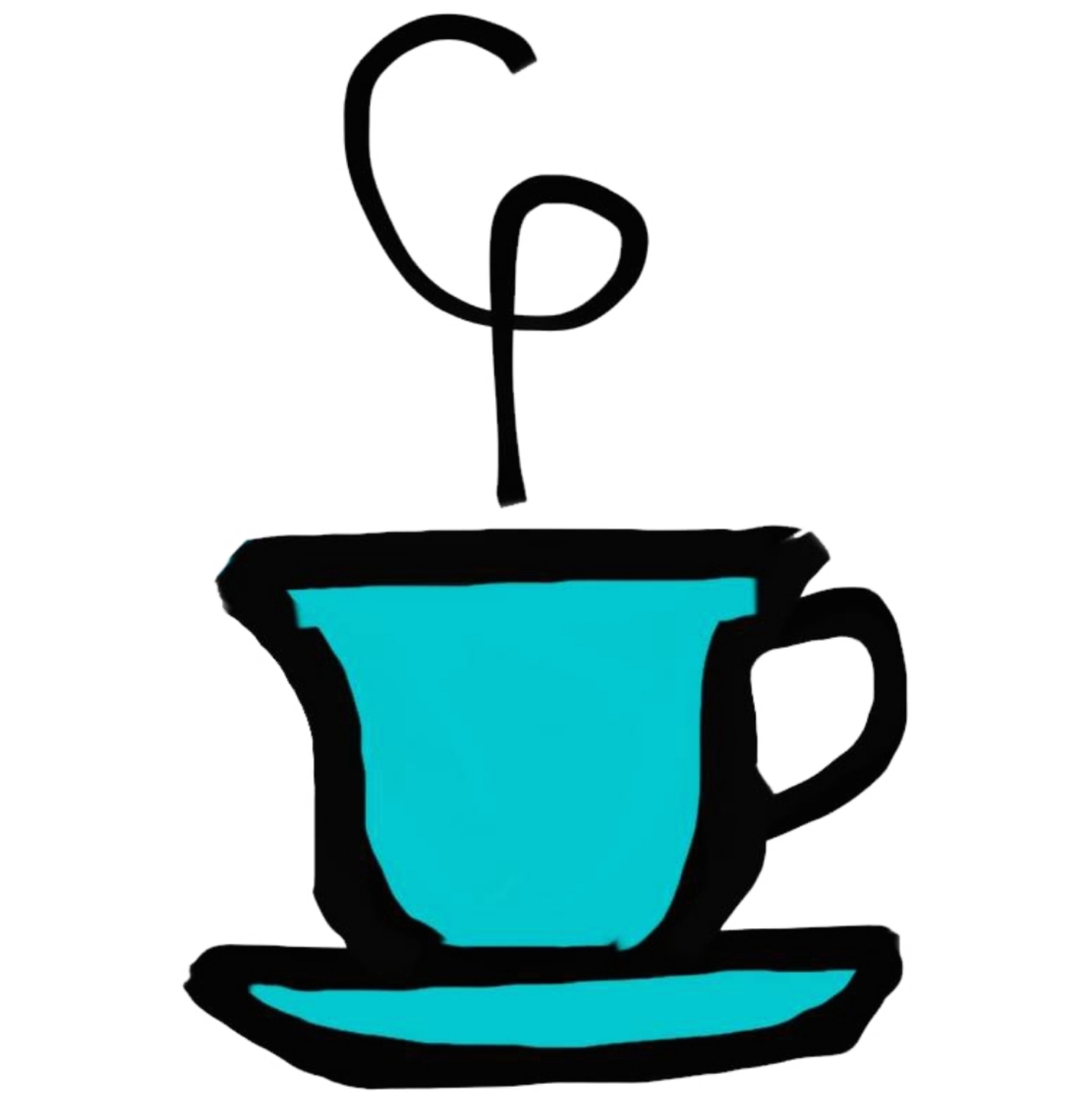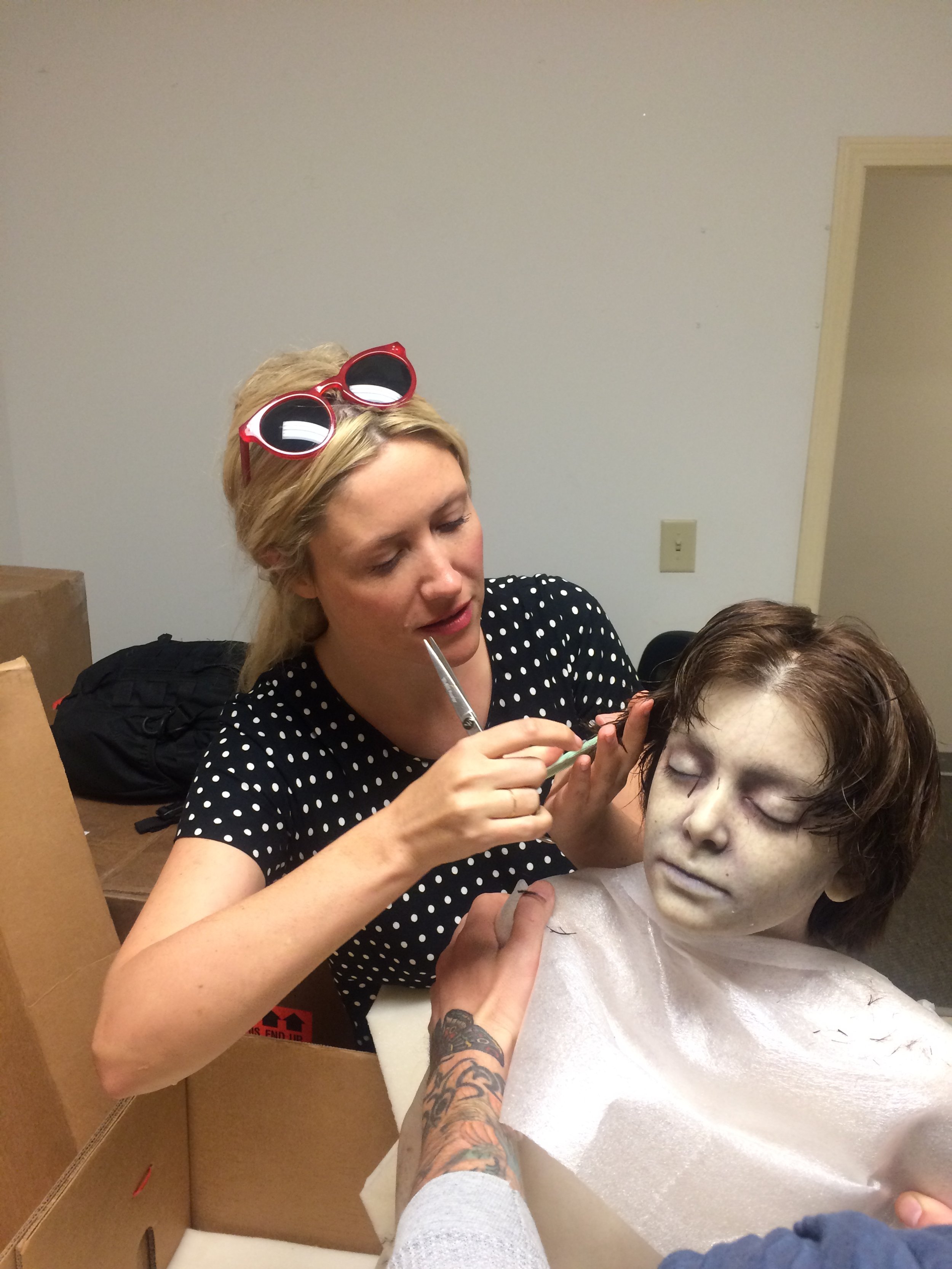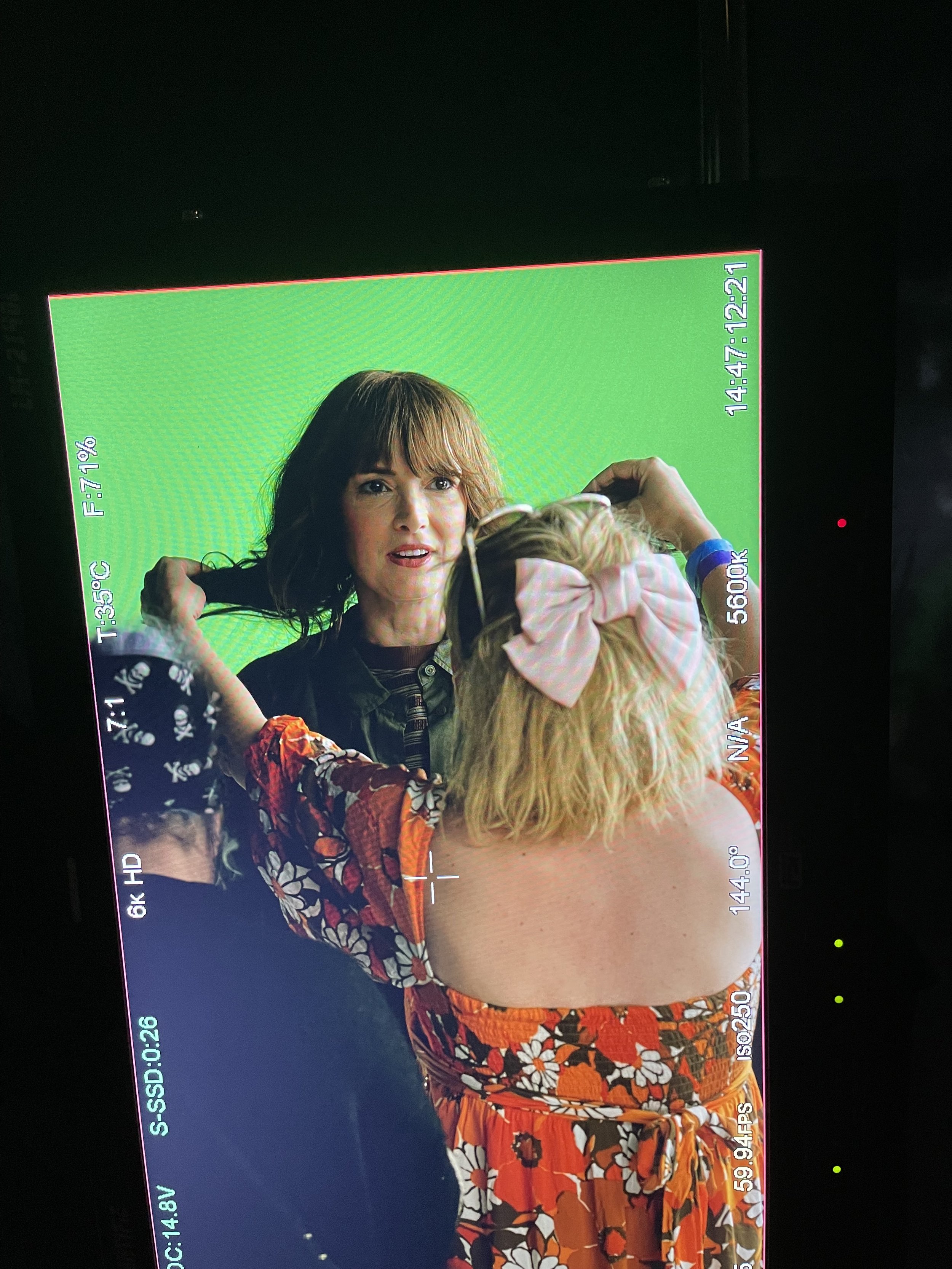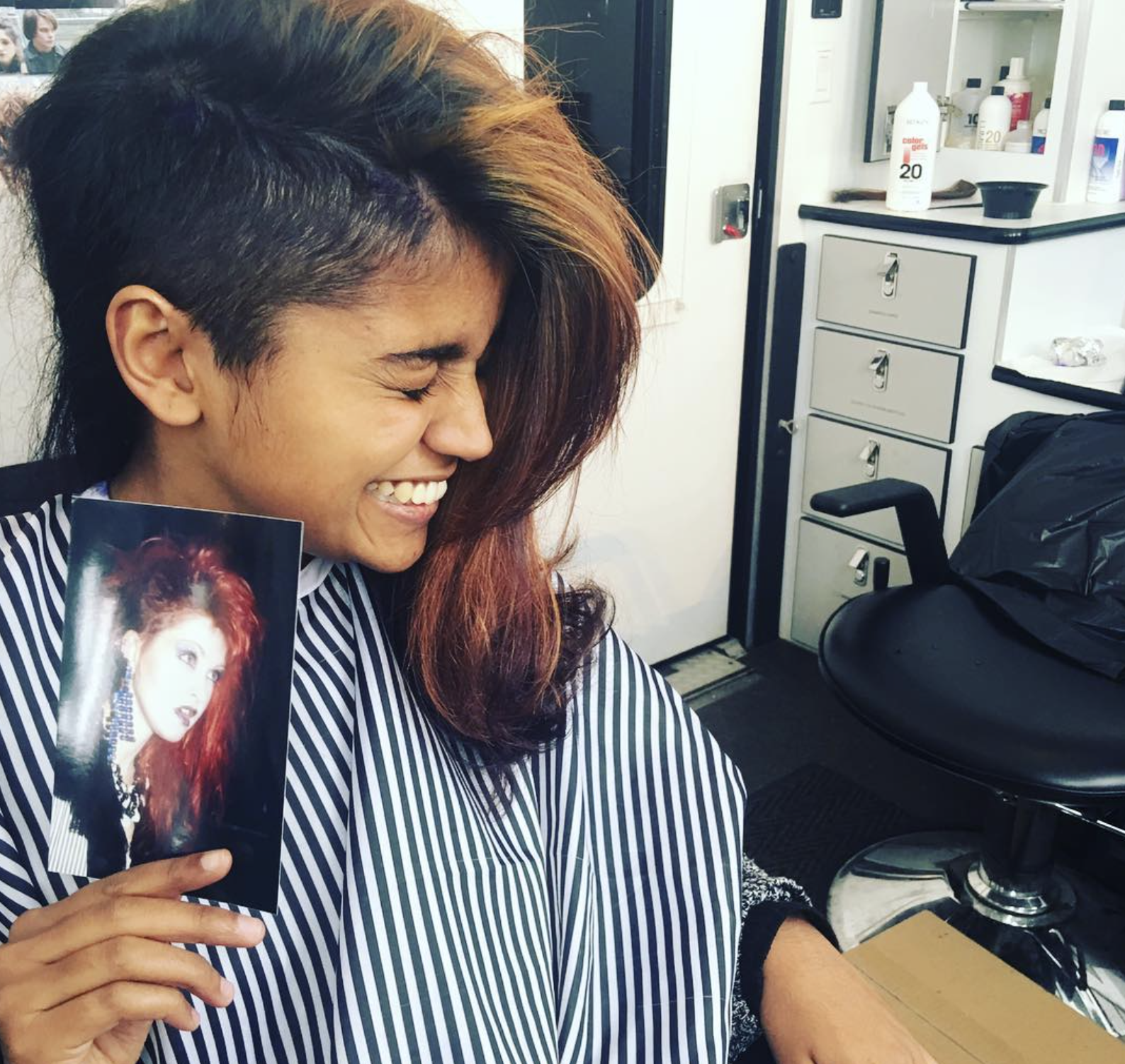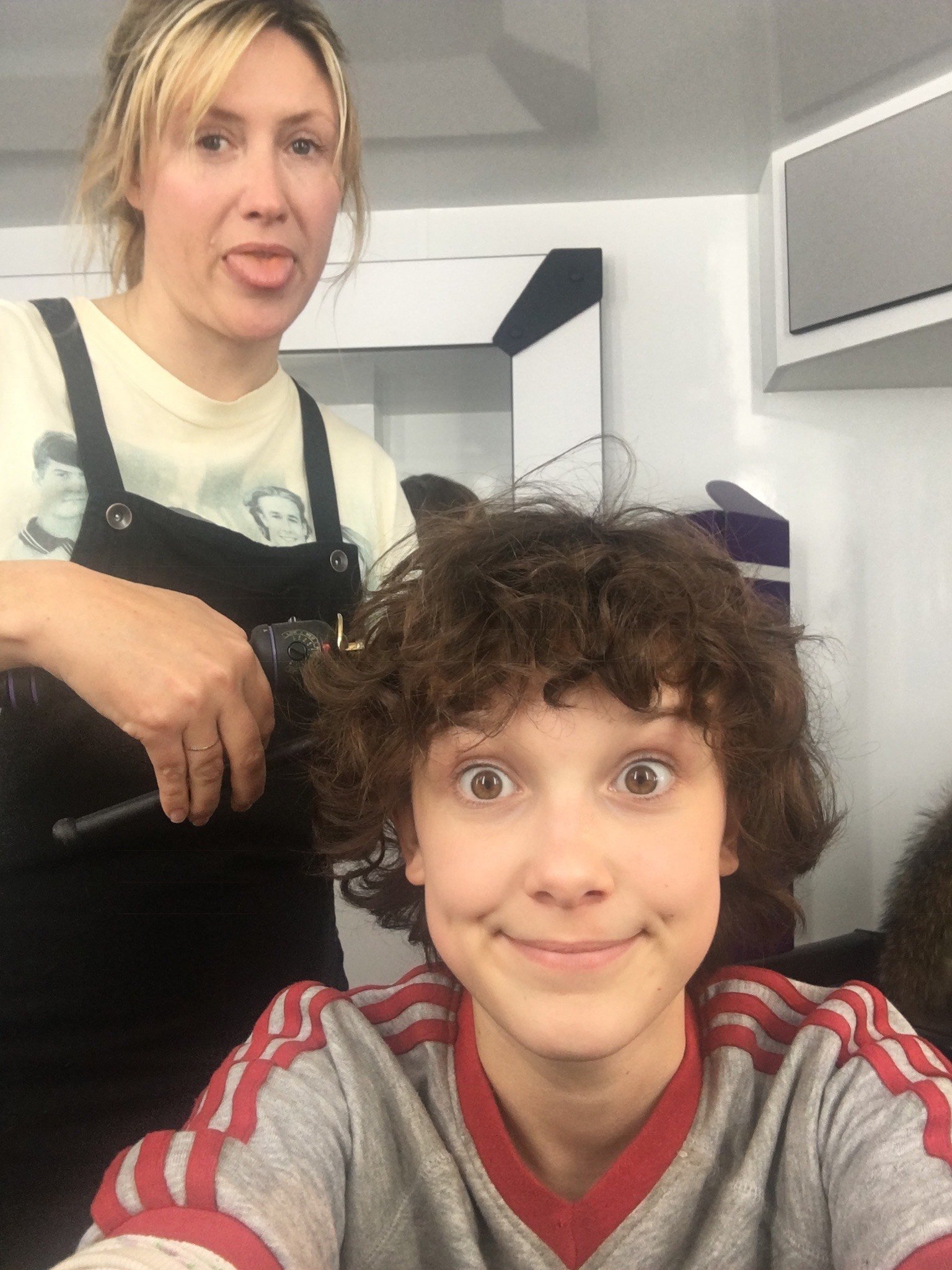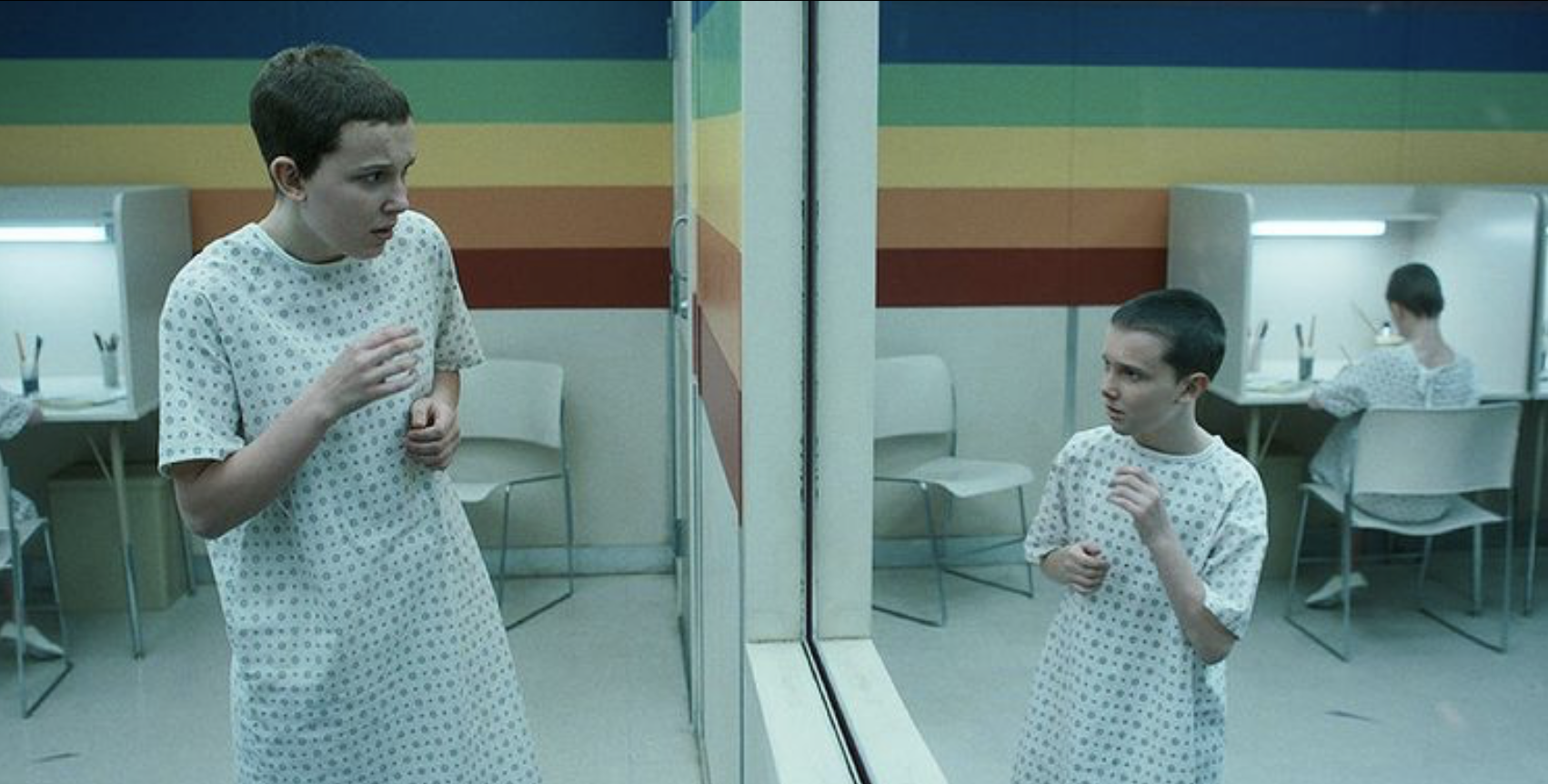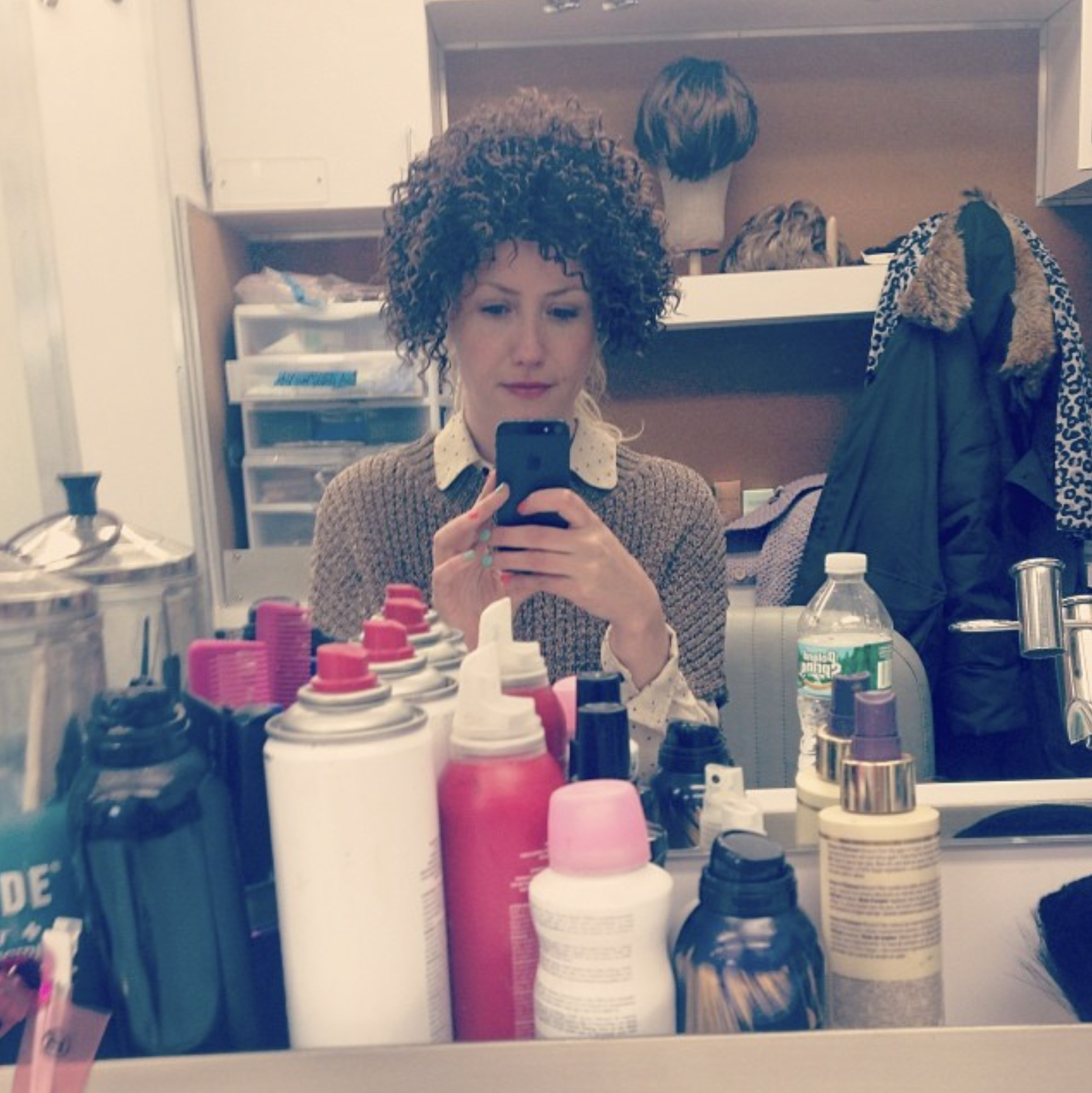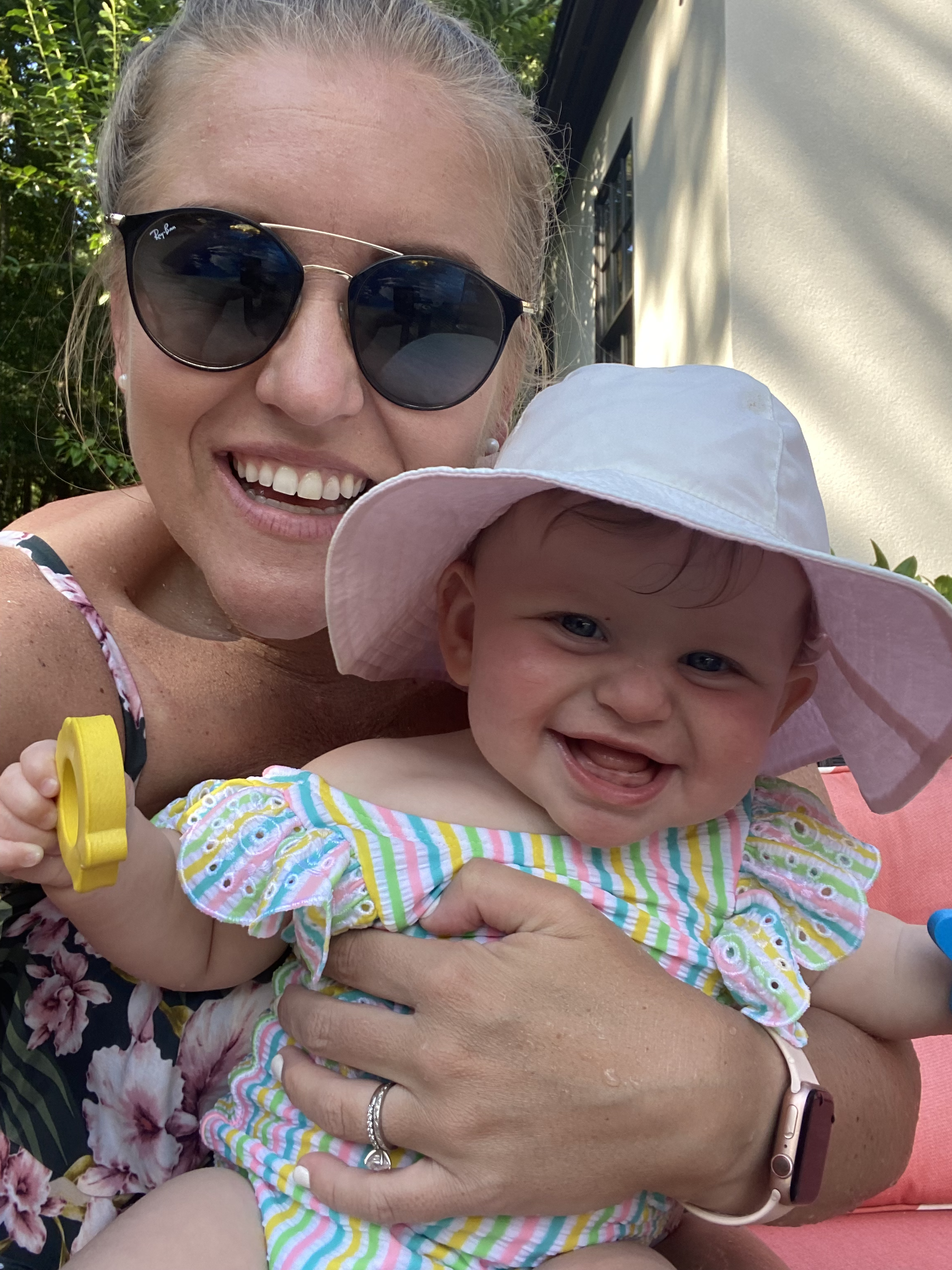Telling Stories with Hair
/Why head of the hair department for Stranger Things Sarah Hindsgaul moved to another country to tell stories with hair, the rejection that changed her life, and why she followed her gut and risked everything to create the buzz-cut wig for Eleven.
All photos courtesy of Sarah Hindsgaul.
The day Season Four of Stranger Things comes out on Netflix (May 27, 2022) I’m unable to watch (aka binge) right away because of plans I’d made long before I knew the release date. The next day, on my way to plans I slightly regret because I wish I was spending all day watching Stranger Things, I reply to an Instagram Story of the only other person I follow who is as obsessed with Stranger Things as I am (her mom is currently watching the series for the first time and provides the best quotes) about her post-binge, spoiler-free thoughts, which I devour. Then I reply, with urgency that surprises even me:
“But I just need to know…how is the hair this season??”
That’s the moment I realize I’ve never looked forward to hair the way I do with Stranger Things. That’s when I know I need to know more.
I have an inkling there’s something special here, perhaps someone special, a storyteller behind the perms and buzz cuts and mullets.
There is. Her name is Sarah Hindsgaul. And I am not the only one who’s been taken with her craft. When I begin to look up who is behind these hair stories, I find more press than I’ve ever seen for hair on a singular show – Vogue, GQ, The Hollywood Reporter, and Vanity Fair all cover the now iconic hairstyles Sarah has created in six years and four seasons of Stranger Things.
But what I couldn’t find more about was Sarah. Who was this woman telling stories with hair so beautifully and intentionally? How did she get so good, and what about her process lends her work to making so many of us feel something through a screen?
“I was so scared of getting behind.”
Before I meet Sarah across a Zoom screen I think, Why didn’t I do my hair today? But I relax when I see Sarah’s wild blonde hair sitting just above her shoulders, unfussy and natural. She wears a loose top with flowy sleeves, reminding me of the dresses in the behind-the-scenes photos and videos she shares on Instagram: gorgeous almost-period-but-definitely-modern long dresses with statement sleeves, paired with sneakers and big pink bows in her hair.
Sarah tells me about growing up in Copenhagen, Denmark, and the theater school for kids she attended and loved, where she quickly realized she didn’t want to be on stage; her favorite part of a production was the character development, especially how a character’s look could help tell a story, say something about who they were, what they wanted, and where they were going.
From a young age Sarah was consumed with questions about people: how we become who we are, and how we use hair and clothes to share that with the world.
She first considered going to college for psychology.
But her love of movies led her in another direction, especially Pulp Fiction.
Sarah cut her hair just like Uma Thurman’s, and a dream sparked, one that kept her up at night: to tell stories with hair and work on “really big movies in America.”
Sarah was intensely driven, never stopping to question her dream or its possibility. She just started running. Or rather, learning.
After high school, she went to school for hair in Denmark for four years, apprenticing under the best hairstylist she could find (she looked her up in magazines), spending hours snipping scissors just at the tips to create perfect edges on a bob, or angling her wrist and brush just so to make an “Elvis” blow-out.
For four years Sarah went to school by day and did hair for photoshoots by night: “I was so scared of getting behind,” she says of those non-stop days. “Like if I had a day where I didn't do anything, I was scared I was not going to get to live out my dreams.”
After finishing school she continued to work on any editorial work in Denmark she could get, most gigs in the fantasy genre, models with stiff, high renaissance hair nesting fake birds. Oh, and there was a lot of glitter, Sarah adds: “You know, the nineties. It was crazy and super fun. But at a certain point I just was like, I want to stay with some of these characters.”
Once the hair was sprayed and photos taken, it was over, and Sarah wanted more: more time, more movement, more grit instead of glitter.
After only a few months out of school, without knowing any English, Sarah moved to New York City.
“Nobody wanted me.”
All Sarah could say in English then was “bagel” and “cream cheese,” so with her portfolio in one hand and a bagel in the other, she hit the streets of New York City: “I walked around with my little book and I showed it to anybody willing to see it.”
Her hopes were high. She had a portfolio, years of expert training, she’d taken a big risk for her dream. It was all happening.
“But in the end it didn't work out.
“Nobody wanted me.
“I was devastated.
“So I started over in New York City, shampooing hair in a salon because they didn't even want me on the floor because my English was so bad.”
They also put her in charge of mopping the floors. It was not what she’d come all the way to New York City to do, but she was undeterred: “I think you have to be willing to mop floors at points in your life or you don't get anywhere. Nobody's going to give anything to you.”
She says this kindly, without even the tiniest hint of bitterness; she recalls the mopping-floor days with hope and possibility, a mentality that perhaps kept her going when it might have seemed, at least from the outside, that her dreams were dying.
But while Sarah was rejected from what seemed like all of New York City, she held on to the few kind passes she received, like the people who complimented her portfolio and told her she had potential and encouraged her to keep working on her craft.
Sarah still believed she could do this, that she had talent. Her first rejections didn’t make her think her dream was delusional – it simply taught her that it was going to take longer than she thought. It also showed her how much this really meant to her; she was willing to go the distance.
The long road to a big dream involves a lot of frustration along the way, and Sarah had many frustrating days, weeks, and sleepless nights, her dream still keeping her awake. That phase where hopeful dreaming turns into uncomfortable longing, when you’re far enough from where you started that the initial spark has faded from view, so you hold instead to the glimmer you can now see at the end; but it’s still so small that on the worst of nights it becomes not a beacon of hope but a reality check, the distance still to go no longer a mystery. And now you’re weary; and on some nights, you wish you were already there, worry if it will always feel just out of reach.
Sarah always returned to the work in the morning. And even though doubt sometimes crept in at night, she focused always on the fun she was having during the day. No matter how far her dream felt, she never stopped feeling enamored with whatever hair projects were right in front of her, like the volunteer work she started doing for NYU student films she found on Craigslist. The spark could always be found in the work she loved.
The ideas also almost never stopped coming, especially when she’d watch TV or go to the movies and think, “I could do that better.” She laughs, the same laugh many female artists I interview let out when they say this part, afraid of looking arrogant; I assure them I know exactly what they’re trying to say, because almost every artist I’ve ever profiled has this moment. It’s hard to put into words, but it’s not arrogance; it’s the moment they recognize their own taste, and feel invited to build their skill to match, when they begin to believe in the merit of their own creativity, that maybe just maybe their work could belong in the places they admire most.
“For many years,” Sarah says, “I had ideas about what I wanted to do, and I felt like I could do it, but I wasn't actually good enough to do it. So there was a lot of falling. There were a lot of bloody knees.”
“I cried about it for about a month.”
Sarah had been trained well, she had real work experience, and it wasn’t like she was bad, but, as she says, “it takes years to master something.
“It's like watching a baby when they start walking. They just hit the ground and keep getting up. That’s what it felt like. I just kept getting up and was like, I can do this.”
She doesn’t quite know where that optimism came from, but she was so excited by the work that she “found it fun even to fail…” She pauses, then adds, “sometimes.” We both laugh.
Sarah quickly became the go-to hair stylist for one particular NYU film school class, doing the hair on almost all their films for three years. “It was awesome because we were learning together. You don't want to go too high too fast. It comes back to scrubbing floors, right? You definitely want to do your steps.”
She also loved the safe, warm environment that comes with creating with friends, especially friends who were just as talented, hungry, and green as her; it’s a good place to learn on the job, to make the inevitable mistakes no artist grows without, and rise together.
She became such a fixture that when that class of film students graduated NYU they gave her a graduation cap.
And when those students started making projects in TV and film, they hired Sarah.
She spent the next decade working on anything that would hire her, many shorts and a few episodes of TV, learning on the job, loving every second of it.
Her big dream, though, was to do period hair. She loved being able to shape someone’s hair in a way that told their story and transported the viewer to another time and place.
She’d had that dream ever since she did a period piece for an NYU film, and started getting jobs where she could do period hair, like the 1980’s HBO miniseries Show Me A Hero starring Oscar Issac.
When she then got called in to interview for a new period drama with HBO covering the music scene in New York in the 1970’s, with names like Scorsese and Mick Jagger attached, she was thrilled.
By then she’d been doing period hair in the industry for years, and while she felt ready, she didn’t think she would get the job. There were so many others who had decades on her, and for such a big show, she knew they’d go with someone who had more experience than she did.
But they kept calling her back. Months went by, and she learned she was one of the final two people they were considering to be the head of the hair department.
Sarah was in awe to even be considered with the other artist, someone she admired. The HBO creative team kept going back and forth between the two, and in the end hired the artist with more experience.
Sarah understood the choice, tells me many times how brilliant the person they went with is, but she was completely devastated. “I cried about it for about a month,” she says. It’s the first time she doesn’t smile, the first time it seems a setback really gutted her, as if the optimism she’d been running on finally ran out. That moment when you feel like maybe just maybe all your dreams are coming true and then they don’t; as if how far you’ve come means nothing, as if you now have proof that you will never get where you’ve been trying to go.
Then Sarah got a call from a good friend she’d met on the set of Show Me A Hero: Winona Ryder.
“What are they going to go through?”
Winona had recently been given a lookbook Matt and Ross Duffer created for their pitch to various networks for Stranger Things, a TV series set in Indiana in the 80’s, featuring kids and monsters and mysteries. Winona knew Sarah was heartbroken, and knew from Show Me A Hero that her period work was good. “Hey,” she consoled, “this isn’t going to be big like the HBO thing, but at least it’s a period show; maybe you can come and do this with me?”
Winona showed Sarah the lookbook, and as Sarah describes it, it was fun, and “very much alive.” She was so sad then that “fun” sounded perfect.
She moved to Atlanta for six months with her friend. She cried for the first two weeks, still grieving the big-budget high-profile show she almost got then didn’t. But as it turned out, that show got canceled after its first season. “It was my luck I didn’t get it,” she says now.
Stranger Things is now in its fourth season, with a fifth and final season in the works.
The hair so many have fallen in love with over the last six years is the product of a highly collaborative process, involving a team Sarah adores and talks about constantly, all who are seemingly as obsessed with story as she is. Each hairstyle begins with the writers; the script.
“When I first get a script,” Sarah tells me, “I go through every single character, looking for their arc. Where are they going? What are they going to go through? Who are they as people? What's their emotional process?”
With that in mind, before she gathers visual inspiration for a character’s debut look, she asks herself one question: “What do I want people to think about who this character is when they see them for the first time?”
Sarah is careful that a look doesn’t reveal too much too soon, using subtlety and contrast to enhance a storyline or a surprise.
Like for 001, the initially kind orderly who (spoiler alert!) becomes the prime villain Vecna, Sarah wanted his hair to have a soft, cherub-like look, inspired, she says, by cupid.
While the script provides the emotional foundation, Sarah finds it almost impossible to begin to design possible looks without casting.
Sarah sees the actors as co-creators of the final look, taking in their feedback and ultimately looking to their reactions to decide when the look is ready.
It takes a lot of experimenting to get to what we see on screen, like the six tries to get Eddie’s mullet just right; you can see one such screen test on her Instagram, which to date has over a million views. She mentions in the post that what ended up on screen was different than where they started, and that Rob Pickens, the brilliant wig maker, and Joe, the actor who plays Eddie, were essential in getting to the final (and in my opinion, iconic) look.
But how does she know when to stop experimenting? How does she know when it’s ready? “You know when the actor puts it on and lights up. You can feel it.”
“They take everything away from her.”
Which is why Sarah puts a lot of effort into creating a warm working environment, like the one she found at NYU, where everyone feels safe to share their opinions. “The most important thing is an actor feeling comfortable to speak up, because if they don’t feel the hair is helping them become the character then it doesn't matter.”
If Sarah has a commitment to hair, she has an even deeper commitment to story, which is why she risked everything to make it possible for Eleven (spoiler alert!) to have a shaved head in Season Four, episode five, when she’s taken back to the lab where her character was first introduced in Season One.
The script called for Eleven, who by season four has long, wavy, chestnut hair, to have a shaved head again, just as she did in Season One. But this time, the actor Millie Bobby Brown had other project commitments in addition to Stranger Things, which meant actually shaving her head wasn’t possible. And getting a wig to look realistic with such a short cut requires a very time-consuming technique that costs $10,000 a day, and only lasts for one application. They had 85 shooting days to cover.
The other option requires a four-hour daily application, and Millie was still considered a child actor at the time of filming Season Four, so her time on set was limited. They didn’t have enough time or money for the shaved head. They were going to have to settle for pulling her long chestnut wig into a ponytail.
But Sarah was offended by the idea of a ponytail for this moment in the story – it didn’t fit. And it wasn’t in the script. The shaved head was in the script, and it made Sarah cry when she read it: “They take everything away from her, everything. She starts back to zero again, all the way back to scratch.
“We did a lot of shaving of people's heads when we shot in Lithuania. Shaving heads is a very sensitive thing. It’s almost like asking people to get naked, it almost strips you from who you are.
“Eleven worked so hard on creating her identity, right? We’d had her in seven different looks up to this point. And she's still trying to find herself. And then they just take it, rip it away from her while she's sleeping.” Sarah almost cries again as she talks about it, as if Eleven is a real person. Because, for her, she kind of is.
The shaved head was visually essential for Sarah; she wanted to make people feel the way she felt when she read the script.
Matt and Ross, otherwise known as The Duffer Brothers and the show’s creators, also believed deeply in what the shaved head represented for the story, but since they couldn’t afford the proven options, they were hesitant to try something that had never been done before, knowing how vicious the internet can be, how one wrong move – like a bad wig – could erase everything that had come before. It’s every artist’s worst fear – their art being turned into a joke.
Sarah of course didn’t want that either, but what seemed truly impossible to everyone didn’t seem impossible to Sarah: “I was like, I just think I can maybe do it.”
She had an idea, something new to try, a way to make a shaved-head wig that wouldn’t cost $10,000 a day or require a four-hour application.
By this point, she’d been working in hair for 20 years, always learning, always absorbing new ideas and tricks; she even worked as the New York location department head on Marriage Story just for the learning experience, and often reached out, cold emails, to other hair department heads she admires, like Cassie Russek who is currently working on the next Guardians of the Galaxy movie; they’ve become friends and share with each other what they’re learning on the job.
Sarah went into Matt and Ross’s trailer almost every morning, “driving them nuts,” she laughs, bringing them different ideas for how she could make it work.
And because of course they are storytellers too, they wanted her to be right, and they’d created the same environment Sarah creates in her chair, wanting everyone to feel comfortable enough to share feedback, ideas, and opinions; one where ego and even reputation take a back seat to story. Even though they were scared, they never told her to stop.
She was able to get $10,000 from the line producer to try something she didn’t really know for sure would work. Matt and Ross gave her only one condition: “If we can see even 5% that it looks like a wig, it’s out.”
Sarah knew she was putting her own career and reputation on the line too.
She had to contend with the real possibility that if this did get to screen but didn’t actually work, caused an internet meme storm, maybe she would never work again. But she couldn’t shake the other thought: “What if it does work? What would it mean for the story?”
In the end, she came back to the bleeding knees she references often; she’d fallen so much in the past that she wasn’t really that afraid: “If I fall, I fall, but it’s worth it. And I’ve learned if you feel something is really important you shouldn’t give in; you should keep going, at least give it your best. No matter what happened at least I could say I gave it everything I had.”
Her 20+ years of experience went into that wig.
And when it aired on episode five, it was one of the most Googled things that day.
Because people were googling to find out if Millie had shaved her head.
“Being a human makes you more creative.”
Sarah was pregnant through most of the work she did for Season Four (that baby’s godmothers are Winona and Millie), and has always been intentional about creating a working environment where women can thrive. “I don't think you should have to choose between your dream or being a mother. You can have both, and there are many different ways of parenting. Men travel all the time.”
She’s a big believer that women should, like men, be able to parent in different ways and not be judged for it, and that an industry initially designed for men also needs to change to accommodate and honor the talented mothers bringing our favorite stories to life.
When it comes to the hair department she leads, she’s created a team that allows for people to cover for others when they need to take care of their kids or other family things: “I'm like, you’ve got to be able to be alive at the same time as work; and being a human makes you more creative.
“How can you understand people if you're not living? You're telling human stories. That's why we all love a lot of these projects, because they are so close to that feeling.”
Sarah has two kids in college in New York and one six-month old with her now in her house in LA where she’s Zooming in from.
She shows me the window to the right where you can see the Griffith Observatory in the distance, and mentions that she’s sitting in her closet which houses her wig collection. I ask if she can tilt the camera to show me some of her wigs.
But she can’t.
Because a few weeks ago, she looked out that same window and saw a California wildfire. In survival mode, she grabbed exactly three things and ran out the door to her car:
Her baby
Her dog
Her wigs
Thankfully, the fire didn’t reach her house. But the wigs, she tells me, are still in the trunk, including the blonde wig Eleven wears over her real shaved head in Season One.
In Season Three, Sarah began styling the incredible actor Maya Hawke, who plays Robin, and who also happens to be Uma Thurman’s daughter, the wearer of the original Pulp Fiction hairstyle that inspired Sarah all those years ago in Denmark.
On the day I write this, I see Stranger Things Season Four is being considered for an Emmy in the category of “Outstanding Period and/or Character Hairstyling.”
I’m sure being nominated or even winning would be a dream come true for Sarah, but I’m not sure it would top the one she shares in our interview; when I ask her if she’s had a dream come true moment she answers immediately.
It was the moment she put the experimental shaved-head wig on Millie and saw her light up.
